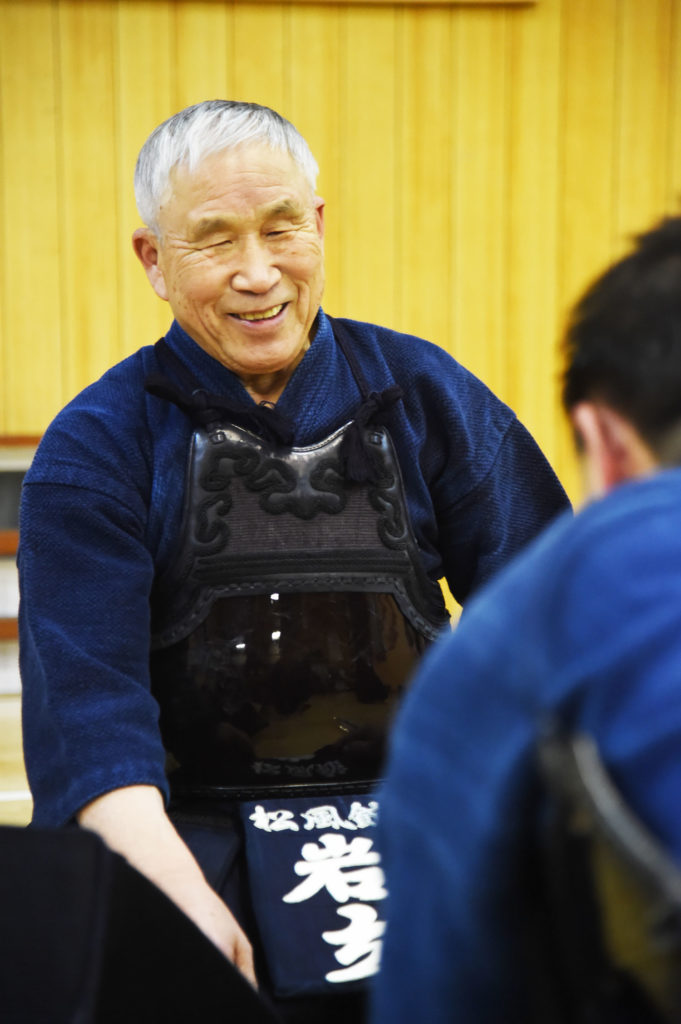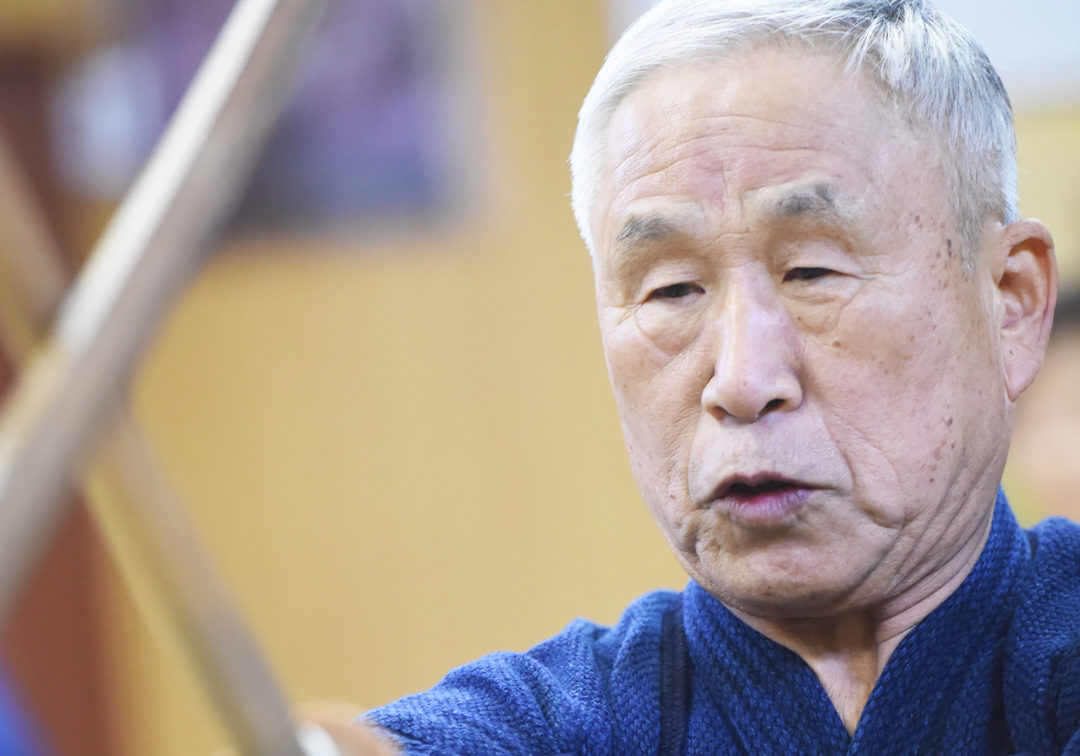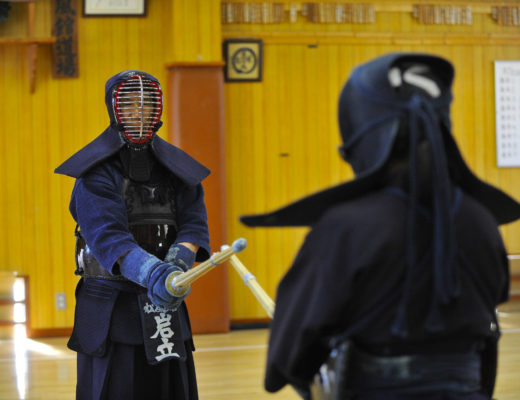2022.9 KENDOJIDAI
Translation: Pepijn Boomgaard
The Kendo that I learned and the Kendo that I want to pass on. We asked a Hanshi teacher to contribute to this article.

A 38 Shinai was ¥240
It has been 68 years since I started Kendo. I began when I was 15 years old, in my first year of high school, and I have continued until today. I was born in March 1939 as the third son of a farmer in Inba District in Chiba. Seven years later my sister was born. As my family would go to the fields during the day, it was my responsibility to take care of her. Around March 1945, the army soldiers stationed at the elementary school were practicing Jukenjutsu (bayonet) drills in the schoolyard. At night, the soldiers would come to the farm to take a batch, and it was my daily task to wash their backs. Above us, American bombers flew in formation, and two of them crashed into a field in our village. I have vivid memories of picking up the parts and playing with them.
On August 15, 1945, when I was in the first grade of elementary school, the war ended in Japan. I learned of the end of the war when the villagers gathered in the schoolyard and listened to a radio broadcast.
From 1945 to 1952, Kendo was banned in schools and other public institutions, and I grew up without ever having seen or heard of Kendo. The only memory I have of sports is wearing gloves that I made myself and playing baseball. In junior high school, I joined the table tennis club.
I then went to Narita High School. I wanted to become a police officer like my cousin, so I begged my parents to let me go to high school. I was under the impression that in order to become a police officer, I had to practice Judo, so I went to observe the Judo club training. However, all of the people practicing there were big. When I looked at the Kendo club practicing next door, I saw small people practicing. As I watched the practice, the head of the club, Ito Shoji Sensei, told me to come in. That’s how I ended up joining the Kendo club. This was my first encounter with Kendo. I joined the club, but there was no one to teach me, so I just mimicked the others.
We were poor at that time, so I could not afford a Bogu. I found a heavy and painful bamboo Do and I stuffed cotton inside my Kote. A 38 Shinai cost ¥240 at that time. This was the same amount as a day’s wages for a road construction worker. As this was a lot of money, I remember that I took very good care of my Shinai. I would apply glue made from crushed rice grains to the splits and cracks every day. I had to ride my bicycle for 10 kilometers to get to school. It was all unpaved gravel roads. This might have strengthened my legs.
Instead of practicing effectively in pairs as we do today, we had to ask our seniors and teacher to practice with us. We also did not have a unified way of doing Uchikomi, such as striking Men and Kote-men. Instead, we just asked our seniors and teachers to teach us. At that time, local 6th and 7th Dan teachers came to our practice at Narita High School. We never practiced with our classmates, and we never did Shiai practice.
In my last year of high school, I attended a practice of the Kendo Federation. Here, I saw a Sensei wearing a white outfit. His attire was magnificent, his posture was magnificent, and his Kendo was refined. Even I could understand that he was not a normal person. This all-white person was Itoga Kenichi, who would later teach me at the Chiba Prefectural Police. I instantly admired him.
A little while later, all of the third year members of the Kendo club were called to the principal’s office. When we opened the door, Itoga Sensei was there. He asked us if we would like to join the police force.
At that time, being a police officer was a popular profession, and the acceptance rate was about 1 in 20. It was not uncommon for the sons of police officers to fail the exam. I can only say that I was very fortunate to receive an invitation under such circumstances. I immediately raised my hand.
Narita High School was very strong, winning the first Kanto tournament and finishing second the next year. However, I was not in the team. Even so, I never missed a single practice. I’m not sure if they recognized this, but I was accepted into the Chiba Prefectural Police.
Itoga Kenichi Sensei and Mabuchi Koukichi Sensei
In 1957, I was hired by the Chiba Prefectural Police. After one year of service at the police academy, I became a member of the Kendo Tokuren. In my case, I worked at a police box during the off-season. This system of working was called “commuting Tokuren”. I went to training from my official residence in Matsudo, where I came to live after graduating from the police academy
It was a long way from Matsudo to Inage, where I practiced. But as I would be training with Itoga Kenichi Sensei, who I greatly admired, it was no trouble at all.
Born in 1913, Itoga Sensei went from Chiba Junior High School to Tokyo Higher Normal School (now the University of Tsukuba). After graduation, he went to teach at the Tokyo College of Physical Education as an assistant professor. After the war, as Kendo made its comeback, he became a Kendo instructor at the Chiba Prefectural Police, where he taught ever since.
As Itoga Sensei graduated from Tokyo Normal Higher School, the so-called head temple of Kendo education, his theoretical way of instruction was very easy to understand.
He was very skilled at imitating our movements. He corrected our bad habits by striking in the same trajectory as we did. When we went for Men, he would hit Men. If we went for Kote, he would hit Kote. Itoga Sensei was the kind of person who would praise us when we lost and scold us when we won. It seemed like his main focus was on helping us learn correct Kendo.
Like Itoga Sensei, Chiba Prefectural Police instructor Mabuchi Koukichi Sensei (Hanshi 8th Dan) also trained me strictly. Mabuchi Sensei was born in 1914 and was at the Kyoto Kodokan from 1931 to 1937. Here, he became the direct disciple of Ogawa Kinnosuke Sensei. During this time, he continued training at the Budo Senmon Gakko. He later joined the Chiba Prefectural Police and won the individual championship at the Kanto Seven Prefectures Police Budo Tournament in 1939. In 1953, he became an instructor at the Chiba Prefectural Police and an instructor at the police academy, where he eventually became head instructor. Mabuchi Sensei also participated in the All Japan Police Kendo Tournament, which started in 1953, and the Kanto Regional Police Kendo Tournament. He was my teacher and my great senior at the Tokuren.
Mabuchi Sensei trained us in the Kendo style that he had developed at the Budo Senmon Gakko. His foundations were based on Uchikomi and Kirikaeshi, and the strength of his legs and the refinement of his techniques were exceptional.
Keiko at the Tokyo Metropolitan Police and the Imperial Guard
The rest of this article is only available for Kendo Jidai International subscribers!




